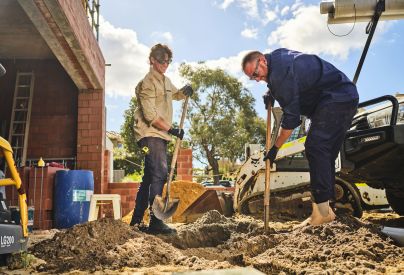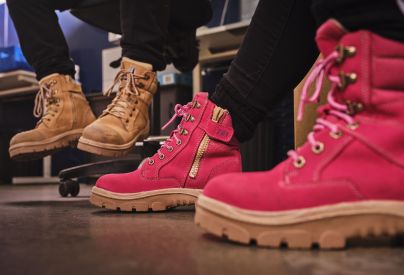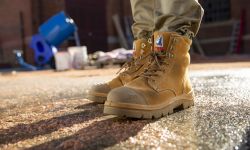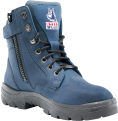Whole-body protection: Your PPE guide

Personal protective equipment, or PPE, is a head-to-toe concern. So although Steel Blue is known for making the best work boots in the business, we’re stepping back to look at whole-body health.
What is PPE?
PPE, short for personal protective equipment, refers to the clothing and accessories used to prevent workplace (and DIY) injuries.
Every tradie should be able to answer the question, “what is PPE?”. However, too many people take PPE for granted. They might think it’s ‘just part of the job’, so the bare minimum is acceptable.
PPE isn’t about keeping Health and Safety reps happy or meeting minimum standards. It’s about protecting your health so you can work hard and go home safely.
Whose responsibility is PPE?
There’s often confusion when it comes to provisioning protective gear. Let us clear things up: employers must provide and pay for PPE.
The model Work Health and Safety Act makes it clear that employers are required to provide protective equipment when it’s used to comply with safety standards. Sole traders and self-employed contractors must supply their own PPE.
However, safety is everyone’s responsibility. Your employer might be required to provide PPE, but it’s your job to ensure you and your crew use it properly.
From hard hats to gloves to work boots, PPE should fit properly, stay on while you work, and not cause an obstruction or trip hazard.
Choosing the right PPE for your job
It’s essential to familiarise yourself with the nuances of PPE so you’re not accidentally exposed to risk.
For example, tradies working with heavy tools or rolling equipment might require work boots with metatarsal protection. Paramedics and first responders can benefit from lightweight safety boots with composite toe caps and pathogen resistant leather. Road construction crews need a different kind of hi-vis vest to FIFO workers, and not all steel cap boots offer the same protection.
If in doubt, seek out an on-site safety representative or search for the relevant legislation.
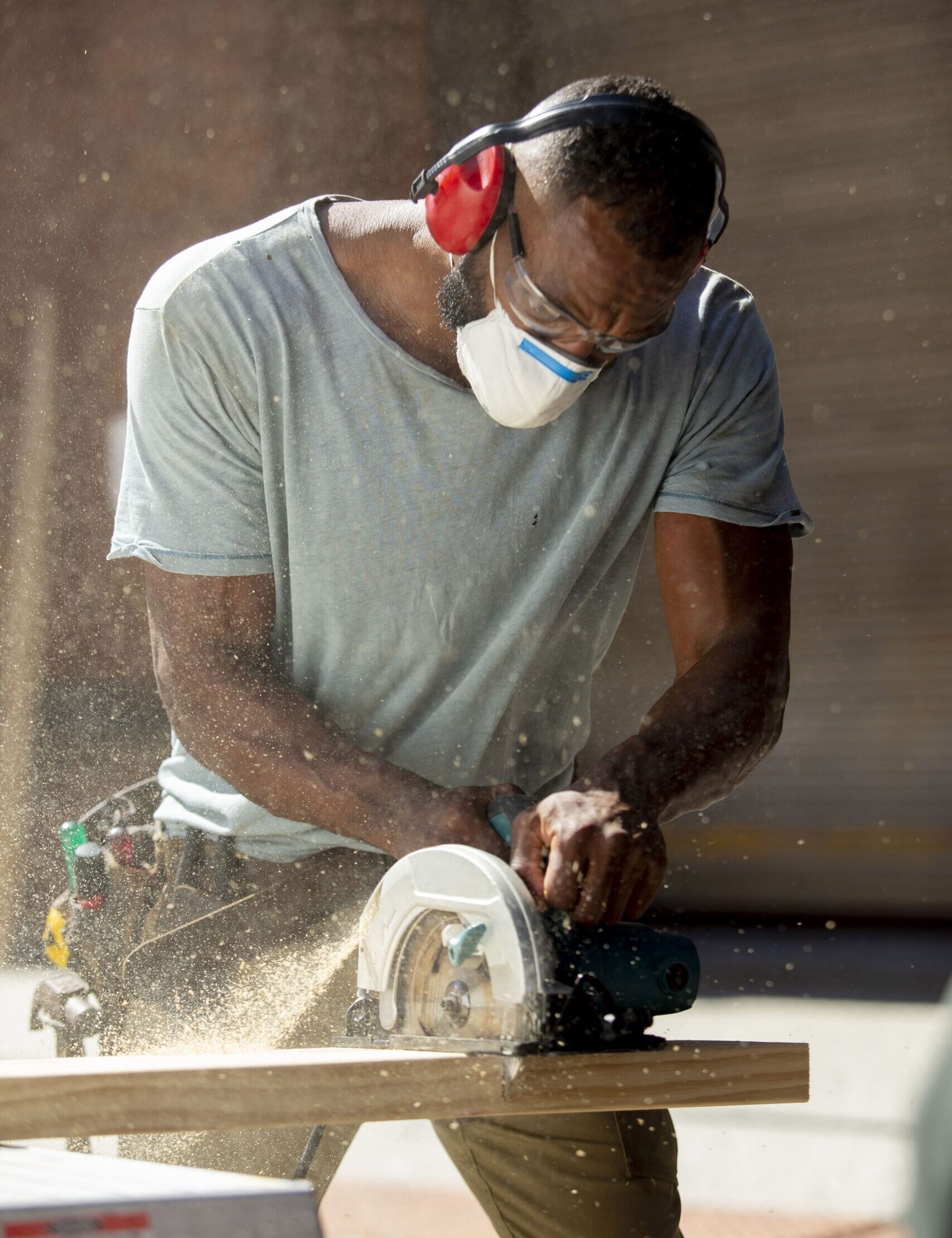
Head protection
- Hard hat: Look for the label on your hard hat indicating what “type” of protection it offers. In Australia and New Zealand, Type 1 offers general protection, Type 2 is for high-temperature work, and Type 3 is for bushfire protection.
- Hearing protection: Workers exposed to loud noises for a prolonged period should use earplugs or earmuffs to prevent hearing loss.
- Eye protection: Goggles or safety glasses prevent loose particles, sparks, sharp objects, debris and chemicals from affecting your vision.
Hi-vis clothing
Many trades require high-visibility clothing, also known as hi-vis, as part of the uniform. Like hard hats, there are different classes of hi-vis PPE for different working environments.
AS/NZS 4602.1.2011 outlines three classes for high-visibility clothing:
- Class D: Daytime use
- Class N: Night-time use, including retro-reflective material
- Class D/N: Day and night use
Wearing the correct type of hi-vis apparel is the first step. The second step is ensuring the materials are suited to your work environment.
For example, lightweight fabrics around 150-200gsm are best for warm weather, especially in long-sleeved clothing used for sun protection. Heavier fabrics around 300gsm can keep you warmer on night shifts and in cooler temperatures.
Harnesses
Fall arrest harnesses are an essential PPE measure when working at heights, in confined spaces with high entry points, or on elevated platforms.
Always check the connection points, carabiners, straps and padding to ensure the harness is in good condition. Hopefully, you won’t need to use it. But if you do, a single weak spot can result in serious injury.
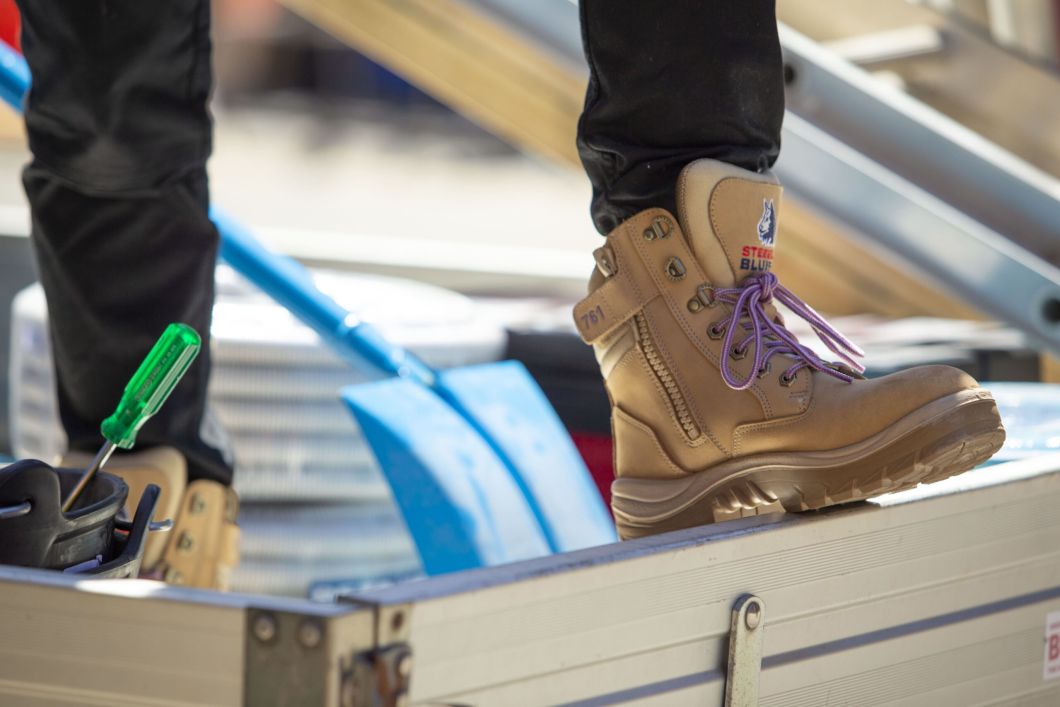
Footwear
Alongside hi-vis clothing and hard hats, safety boots are one of the essential PPE measures for most tradies, if not all.
Innovations in work boot design and construction mean that today’s tradies have more protection solutions. Even “steel cap boots” are more varied than you might think.
- Toe protection: Steel caps are the classics, but composite toe protection is a lightweight and electrically non-conductive alternative.
- Specialised safety: From electric shock insulation to waterproofing, penetration resistance and high-temperature tolerance, modern safety boots have additional features for extra protection.
- Dropped objects: Work boots a Met-Guard keep the metatarsal area of the foot safe from dropped and rolling objects.
- Injury prevention: Acute and chronic injury is a serious hazard when working around dangerous equipment. You can reduce your injury risk and improve productivity by wearing comfortable work boots with cushioning footbeds.
Steel Blue work boots can even reduce the risk of slips, trips, falls and static electricity, thanks to the non-slip and anti-static sole.
Steel Blue takes PPE personally
We want you to go to work energised, excel throughout the day, and come home feeling like you accomplished something. For that, you need the best safety equipment.
We’re constantly innovating to design and manufacture the best work boots for hardworking men and women in trades.
See the Steel Blue range or find your nearest retailer for a custom fitting.


